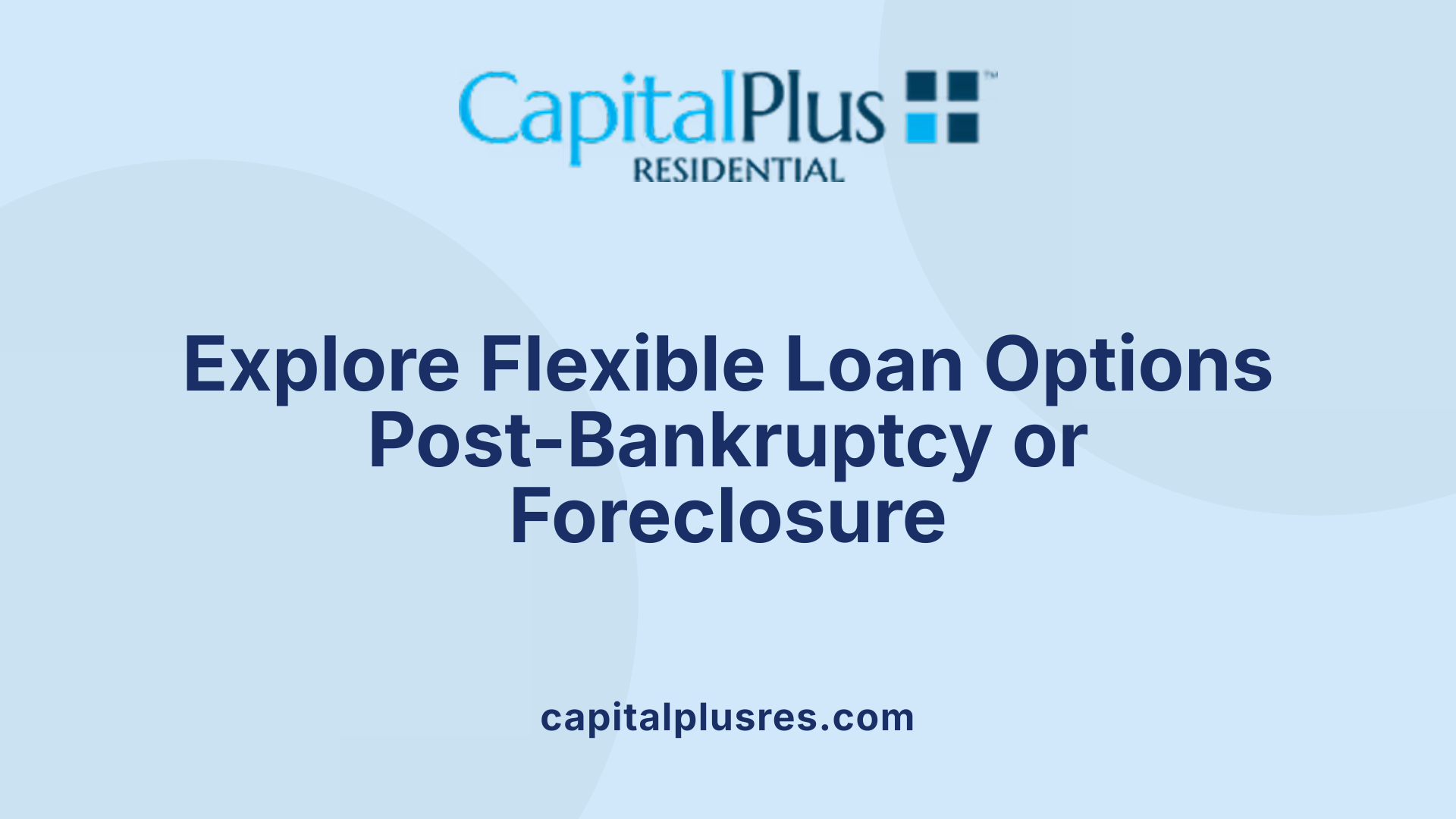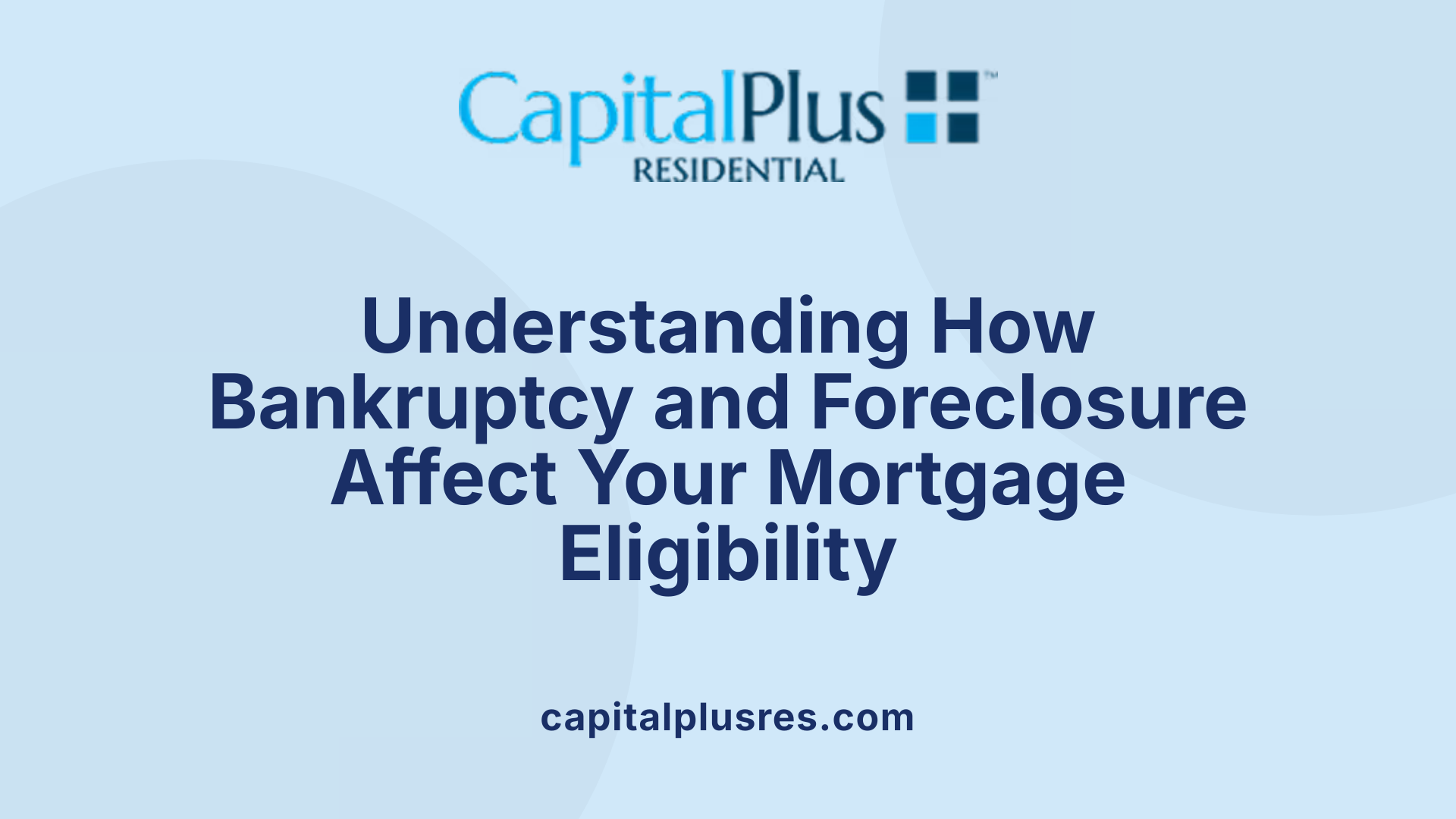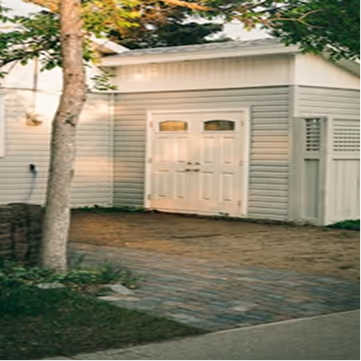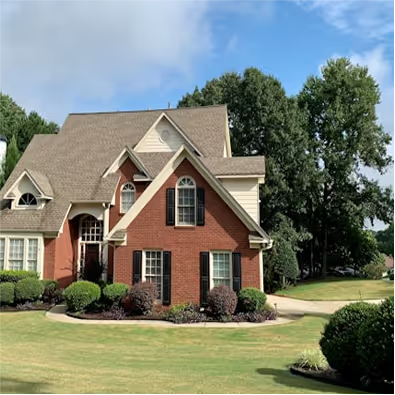Rebuilding Your Dream of Homeownership
Experiencing bankruptcy or foreclosure can feel like a significant setback, but it doesn't mean the end of your journey toward owning a home. With strategic planning, patience, and diligent credit rebuilding, many individuals successfully re-enter the housing market within a few years. This article explores the essential steps, loan options, legal timelines, and strategies to help you navigate buying a home after bankruptcy or foreclosure.
Understanding the Process of Buying a Home After Bankruptcy or Foreclosure
What is the process of buying a home after bankruptcy or foreclosure?
Buying a home after bankruptcy or foreclosure is feasible, but it involves understanding specific waiting periods and taking steps to strengthen your financial profile. Each loan type has its own rules: generally, you need to wait about 2 to 4 years after a Chapter 7 bankruptcy, and 1 to 2 years after a Chapter 13, depending on the loan program. Foreclosures usually require an additional wait of three to seven years.
Rebuilding your credit is crucial. Making consistent, timely payments, reducing your debt-to-income ratio, and saving for a solid down payment can significantly improve your chances of mortgage approval. It’s also beneficial to work with lenders familiar with credit challenges from bankruptcy or foreclosure and to prepare an explanation letter if needed.
Choosing the right loan program can make a difference. FHA and VA loans often allow earlier eligibility due to their more lenient requirements. Applying for pre-approval helps you understand your borrowing capacity and demonstrates seriousness to sellers.
By planning carefully, focusing on credit repair, and selecting suitable mortgage options, many individuals successfully purchase homes after experiencing bankruptcy or foreclosure.
Timing and Legal Requirements for Post-Bankruptcy and Foreclosure Home Purchase
What are the typical waiting periods and legal requirements for purchasing a home after bankruptcy or foreclosure?
After experiencing bankruptcy or foreclosure, many potential homebuyers wonder when they can qualify for a mortgage again. The answer depends largely on the type of loan and individual circumstances.
For bankruptcy, the waiting periods vary:
- Chapter 7 bankruptcy requires a four-year wait before qualifying for a conventional loan.
- Chapter 13 bankruptcy typically allows eligibility after two years from discharge, or after one year if the borrower has made 12 months of on-time payments under the repayment plan with court approval.
For government-backed loans, the timelines are shorter:
- FHA loans generally permit home purchase after two years from discharge.
- VA loans often require a two-year wait, but this may be shortened if there are extenuating circumstances.
- USDA loans usually allow qualifying after three years, with potential reductions for documented hardships.
Foreclosure has longer wait times, but these can also be reduced if certain conditions are met:
- The standard period after foreclosure is three to seven years.
- Typically, it is seven years for conventional loans.
- If extenuating circumstances are documented, this can sometimes be shortened to three years.
The legal requirements for applying for a mortgage after bankruptcy or foreclosure include proof of improved credit score, steady income, and sufficient savings for a down payment or reserves. Borrowers are often asked to provide explanation letters detailing circumstances surrounding their financial setbacks.
An important point is that the waiting period begins from the discharge, dismissal, or completion date of the bankruptcy or foreclosure case, not from the initial filing or missed payments. Successfully rebuilding credit and maintaining stable employment are crucial steps during this period.
By carefully planning and meeting these timeframes and documentation criteria, individuals can increase their chances of securing a mortgage and achieving homeownership after financial setbacks.
Available Loan Options for Individuals with Financial Challenges

What loan options are available for individuals with a history of bankruptcy or foreclosure?
People who have filed for bankruptcy or experienced foreclosure still have pathways to homeownership. They can explore various loan programs that offer more flexible qualifying criteria, especially those backed by the government.
Government-backed loans such as FHA, VA, USDA
FHA (Federal Housing Administration) loans are popular among those rebuilding credit. They generally require a shorter waiting period—about 2 years after Chapter 7 bankruptcy discharge or 3 years after a foreclosure. FHA loans often have lower credit score requirements, with scores as low as 580 sometimes accepted, especially with a 3.5% down payment. In more challenging cases, with a credit score of 500-579, a 10% down payment might be needed.
VA loans are available for eligible veterans and active-duty service members, typically requiring a 2-year wait after bankruptcy discharge. They are known for low down payments and competitive interest rates.
USDA loans target rural and suburban homebuyers. These may be accessible 3 years after bankruptcy or foreclosure, offering benefits like lower interest rates and no down payment requirement.
Conventional and alternative loans
Conventional loans usually have longer waiting periods—about 4 years after Chapter 7 bankruptcy and 2 years after Chapter 13, with some exceptions if circumstances are extenuating. They often require better credit scores and larger down payments.
Alternative loans, such as non-QM (non-qualified mortgage) products, can be options for those with recent credit challenges. These may come with higher interest rates and stricter documentation but can facilitate homeownership sooner.
Down payment requirements and interest rates
Down payment sizes vary by loan type. FHA loans often allow lower down payments, sometimes as low as 3.5%. VA and USDA loans can require no down payment, making them attractive options.
Interest rates depend heavily on credit scores and specific loan programs. Borrowers with improved credit and larger down payments generally secure better rates. Shopping around with different lenders can lead to more competitive offers.
Enhancing your chances
Before applying, it’s wise to work on rebuilding credit by paying bills on time, reducing overall debt, and disputing any errors on credit reports. Some applicants also choose to write a letter explaining the circumstances that led to bankruptcy or foreclosure, which can sometimes influence lenders' decision.
In summary, although bankruptcy and foreclosure impact future borrowing, many pathways remain open. Government-backed loans, improved credit, and strategic financial planning can help turn the dream of homeownership into a reality even after financial setbacks.
Strategies for Rebuilding Credit and Financial Health

How can I improve my credit score and financial standing after experiencing bankruptcy or foreclosure?
Rebuilding your credit after bankruptcy or foreclosure is a gradual process that involves several deliberate steps. First, review your credit reports carefully for any errors or inaccuracies. Dispute any discrepancies to ensure your credit history accurately reflects your efforts to recover.
Making consistent, timely payments on existing debts, such as personal loans or credit cards, is essential. If you have limited credit history, consider opening a secured credit card, which requires a refundable deposit and helps establish responsible borrowing. Credit-builder loans are another effective tool; these small loans are designed specifically to improve credit profiles.
Another helpful strategy is to become an authorized user on a family member’s or friend’s credit account with a proven history of good credit. This can boost your score by association.
Monitoring your credit regularly through free or paid credit reporting services allows you to track your progress and catch any issues early. Keep your credit utilization low—aim for no more than 30% of your available credit limit. Avoid taking on new debt unnecessarily, and practice living within your means.
Seeking guidance from reputable credit counseling agencies can provide personalized advice tailored to your circumstances. Over time, these habits will help you rebuild your financial health, improve your credit score, and eventually qualify for better loan terms and financial products.
Myths and Misconceptions About Post-Bankruptcy/Homeownership
Are there any myths or misconceptions about buying a home after bankruptcy or foreclosure?
Many people believe that purchasing a home after bankruptcy or foreclosure is virtually impossible or that they must wait many years before qualifying for a mortgage. These myths can discourage individuals from pursuing their homeownership goals even when they may be eligible.
In reality, the process of rebuilding credit and financial standing has improved significantly, making homeownership more accessible sooner than many think. For example, certain loan programs like FHA and VA often have shorter waiting periods—such as two years after Chapter 7 bankruptcy discharge or one year into a Chapter 13 plan—compared to the four-year wait for conventional loans.
Building good credit habits plays a crucial role. Paying bills on time, reducing debt, and regularly checking credit reports for errors are effective strategies to enhance your credit score. Saving for a down payment, even if lower or no down payments are permissible under some programs, can also boost your chances of approval and secure more favorable interest rates.
Furthermore, eliminating unsecured debts through bankruptcy can improve your debt-to-income ratio, which is a vital factor in mortgage approval. Having a manageable debt load and demonstrating financial responsibility can help lenders see you as a reliable borrower.
Extenuating circumstances might sometimes allow for earlier qualification, especially if supporting documentation and explanations are provided. As a result, the belief that homeownership post-bankruptcy is out of reach is a misconception. With proper planning, patience, and effort, many individuals successfully purchase homes within a few years after bankruptcy or foreclosure. The process might involve some hurdles, but it remains a realistic goal for those who are determined to rebuild their financial health.
Steps to Take for Re-Entering the Housing Market

What steps should I take to re-enter the housing market after bankruptcy or foreclosure?
Re-entering the housing market after experiencing bankruptcy or foreclosure can seem challenging, but with proper planning and effort, it's entirely feasible. Start by obtaining copies of your credit reports from all three major bureaus. Carefully review these reports for any errors or outdated information and dispute inaccuracies to ensure your credit profile reflects your true financial situation.
Next, focus on rebuilding your credit. Consistently paying bills on time, maintaining low credit card balances, and avoiding new debts are crucial steps. Consider opening secured credit cards or credit builder loans, which can improve your credit history and scores over time.
Simultaneously, prioritize saving for a down payment. Having funds set aside not only increases your chances of mortgage approval but can also help you qualify for better interest rates. Some loan programs, like FHA or VA loans, allow for lower or no down payments, but demonstrating financial stability through savings is beneficial.
Understand the specific qualifying criteria for different loan options. For instance, FHA loans may require a waiting period of two years after bankruptcy, while conventional loans might need four years. USDA and VA loans also have their own timelines and requirements. Knowing these timelines helps you plan your application strategically.
Working with experienced mortgage professionals and real estate agents who understand post-bankruptcy circumstances can provide valuable guidance. They can help you select the best loan programs, prepare necessary documentation such as explanation letters, and craft a plan for strengthening your credit profile.
By consistently managing your credit well, saving diligently, and understanding your loan options, you can improve your chances of securing a mortgage within a few years of the adverse event. Patience and persistent effort are essential in overcoming past credit setbacks and stepping back into homeownership.
Impact of Bankruptcy and Foreclosure on Future Mortgage Eligibility

How does bankruptcy or foreclosure affect my future mortgage eligibility and approval chances?
Bankruptcy and foreclosure can significantly influence your ability to qualify for a mortgage in the future. These events usually lower your credit score and stay on your credit reports for several years—up to 10 years for Chapter 7 bankruptcy and about 7 years for foreclosure. This lingering presence can make lenders hesitant, viewing your credit history as a sign of higher risk.
However, the actual impact depends on many factors, including the timing since the event, your overall credit profile, and the loan program you pursue. For example, FHA loans often permit home purchases two years after a Chapter 7 discharge and one year after Chapter 13 repayment plans, whereas conventional loans typically require a 4-year waiting period after Chapter 7 bankruptcy.
Foreclosures generally require a waiting period of around 3 to 4 years for most loans—sometimes longer for conventional loans or if multiple foreclosures have occurred. Despite these challenges, diligent credit rebuilding—such as paying bills on time, reducing debt, and making consistent, responsible financial choices—can enhance your eligibility over time.
Strategies like seeking mortgage modifications, adhering to repayment plans during a Chapter 13 bankruptcy, or ensuring liens are properly discharged can also help restore your chances of approval sooner. Ultimately, patience and strategic financial management enable many individuals to qualify for mortgages and buy homes after overcoming bankruptcy or foreclosure hurdles.
Strategies for Enhancing Your Chances of Mortgage Approval
What steps can I take to improve my credit after bankruptcy or foreclosure?
Rebuilding your credit is crucial for qualifying for a mortgage post-bankruptcy. Focus on making all your payments—utilities, rent, and any new credit accounts—on time. This creates a strong payment history, which lenders view positively.
Reducing your existing debts and maintaining a low credit utilization ratio—preferably below 10%—shows lenders you're managing your finances responsibly. Paying down balances in full and making frequent payments can help boost your credit score.
Consider opening secured credit cards or credit-builder loans designed to help rebuild credit. Becoming an authorized user on a trusted family member's credit card can also help improve your credit profile.
It's important to avoid applying for multiple new credit lines at once, as this can trigger hard inquiries that lower your score.
Monitoring your credit reports regularly allows you to spot and dispute inaccuracies or outdated information that may hinder your chances of loan approval.
Patience and disciplined financial habits over 1-2 years can lead to significant credit improvements. These steps, combined with meeting waiting period requirements for different loan types, greatly increase your chances of securing a mortgage.
What about meeting waiting period requirements?
Different loan programs have specific waiting periods after bankruptcy. For example, FHA loans typically require a 2-year wait after Chapter 7 discharge, while VA loans generally need 2 years post-discharge. Conventional loans usually require at least 4 years after Chapter 7 bankruptcy.
Fulfilling these waiting periods is essential before applying for a mortgage. During this time, work on rebuilding your credit, saving for a down payment, and gathering documentation.
How important is providing explanations and documentation?
Lenders often request an explanation letter detailing the circumstances of your bankruptcy, demonstrating responsible financial behavior since then. Providing clear, honest explanations can mitigate concerns and improve your approval chances.
Additionally, having documentation of your efforts to recover financially—such as proof of income, savings, or successful debt repayment—can support your application.
Once your waiting period is over and your credit has improved, responding promptly to lender inquiries and presenting comprehensive documentation increases your likelihood of mortgage approval.
| Aspect | Action | Benefit |
|---|---|---|
| Rebuild credit | Make timely payments, reduce debt | Improve credit score, creditworthiness |
| Save for down payment | Set aside savings | Better approval odds, lower interest rates |
| Provide explanations | Write account of bankruptcy circumstances | Demonstrates responsibility |
| Meet waiting periods | Time your application accordingly | Complies with lender requirements |
| Get preapproval | Understand budget and show seriousness | Strengthens negotiating position |
By combining disciplined credit habits with patience and preparation, you can turn past financial setbacks into an eventual homeownership opportunity.
Legal and Documentation Considerations

What legal requirements and documentation are necessary for buying a home after bankruptcy or foreclosure?
When applying for a mortgage after experiencing bankruptcy or foreclosure, understanding the legal and paperwork requirements is essential. Lenders want to see that borrowers have taken steps toward financial recovery and are capable of managing new debt responsibly.
One important document is an explanation letter, where you detail the circumstances surrounding your bankruptcy. This letter helps lenders understand any hardships you've faced and the actions you've taken to improve your financial health. Clear communication can positively influence the lender’s decision.
Proof of steady income and employment is crucial. You will need to provide recent pay stubs, tax returns, and bank statements to verify your income stability. Demonstrating a consistent income stream reassures lenders about your ability to meet future mortgage payments.
In addition, documentation such as recent tax documents, bank account statements, and evidence of savings—particularly for the down payment—are necessary. These records show your financial capacity and responsibility.
Meeting the specific requirements of the chosen loan program is also vital. Different loans (FHA, VA, USDA, or conventional) have varying documentation criteria and waiting periods. Working with knowledgeable mortgage brokers can help you gather the appropriate paperwork efficiently.
Proper documentation and transparency not only meet legal standards but also strengthen your mortgage application after a bankruptcy or foreclosure, increasing your chances of approval.
Achieving Homeownership After Financial Setbacks
While bankruptcy and foreclosure can pose challenges, they do not end your prospects for homeownership. By understanding the required waiting periods, actively working to rebuild your credit, and exploring suitable loan options, you can position yourself for success. Patience, responsible financial management, and professional guidance are key. Remember, many have navigated this path and emerged with new homes—your journey is achievable with proper planning and perseverance.
References
- Guide to Buying a House After Bankruptcy
- Yes, You Can Buy a House After Bankruptcy—This Is How ...
- Buying a house after bankruptcy: What you need to know
- Getting a Mortgage After Bankruptcy: What to Know
- Can I Get a Mortgage After Chapter 7 Bankruptcy?
- How Soon After Bankruptcy Can I Buy a Home?
- Getting a Mortgage After Bankruptcy and Foreclosure
Latest Blog


Get Pre-Approved Today
Start your secure online application now so you can get pre-approved for a mortgage (and close on your dream home) quickly within 5 minutes.









